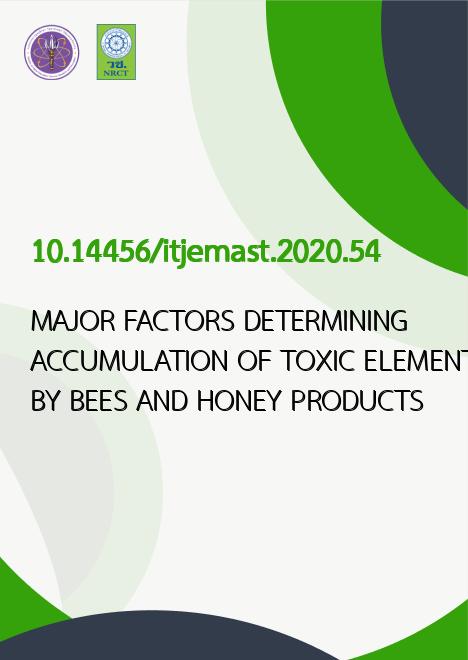
|
MAJOR FACTORS DETERMINING ACCUMULATION OF TOXIC ELEMENTS BY BEES AND HONEY PRODUCTS |
|---|---|
| รหัสดีโอไอ | |
| Creator | Murashova E.A., Tunikov G.M., Nefedova S.A., Karelina O.A., Byshova N.G., Serebryakova O.V. |
| Title | MAJOR FACTORS DETERMINING ACCUMULATION OF TOXIC ELEMENTS BY BEES AND HONEY PRODUCTS |
| Contributor | - |
| Publisher | TuEngr Group |
| Publication Year | 2563 |
| Journal Title | International Transaction Journal of Engineering, Management, & Applied Sciences & Technologies |
| Journal Vol. | 11 |
| Journal No. | 3 |
| Page no. | 11A03N: 1-14. |
| Keyword | Honey bees, Honey contamination, Heavy metals contamination, Ecosystem monitoring, Bee pollen, Bee bread, Ecotoxicity, Propolis, Honey products, Toxic contamination, Bee body contamination. |
| URL Website | http://TuEngr.com/Vol11_3.html |
| Website title | ITJEMAST V11(2) 2020 @ TuEngr.com |
| ISSN | 2228-9860 |
| Abstract | This study presents the results of the main factors that determine the accumulation of toxic elements in the body of bees and some honey products. The following tasks were solved: evaluation of the dynamics of the movement of the heavy metals along with the trophic chain soil-plant-body of bee-honey products; clarification of the main mechanism and the main factors determining the accumulation of heavy metals in the body of bees and honey products. Samples of soil, plants, bees, as well as honey products from areas of the Ryazan region in Russia, were investigated by the method of atomic absorption spectrometry to determine heavy metals. It was found that of all honey products the most environmentally friendly product is honey, and propolis, pollen, and bee bread were most polluted. It was established that the maximum purity of honey was determined by its biochemical composition (mainly carbohydrates, which are secreted by secretory cells of nectaries within a few hours) and by careful draining of pollen grains from nectar by an intermediate valve in a honey sac. It was revealed that the main amount of heavy metals accumulated in the body of bees due to intensive consumption of pollen and bee bread for two weeks, contamination of which was hundreds of times higher than that of nectar and honey, as well as during processing of nectar into honey when draining pollen and entering it into the midgut. The level of pollution of honey products was strongly influenced by the remoteness of the family from the source of pollution. The bee, pollen, and propolis can serve as objective indicators of environmental cleanliness of the environment and the content of heavy metals. |